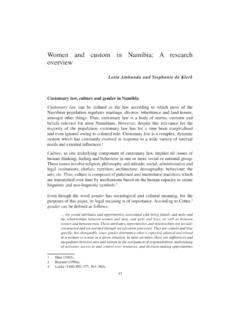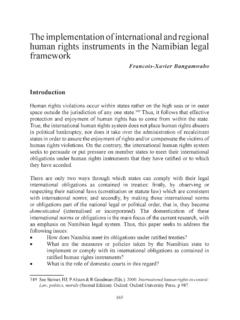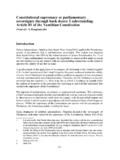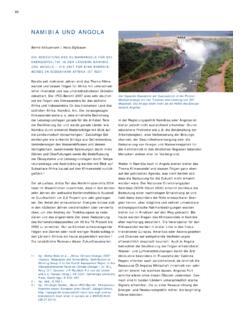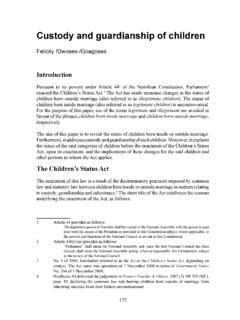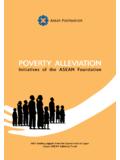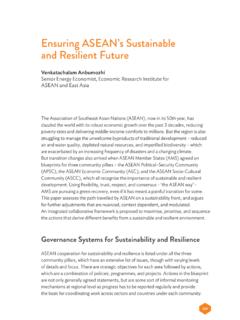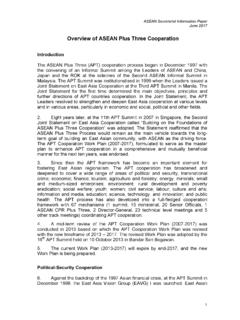Transcription of Japan-ASEAN Relations: Challenges, Impact and …
1 95 Japan-ASEAN relations : challenges , Impact and strategic OptionsThe Association of Southeast Asian Nations ( asean ) s celebration of its 50th an-niversary in 2017 is certainly a milestone, given the difficult conditions under which it was formed in This organization, which started with five states (Indonesia, Malaysia, Singapore, Philippines, and Thailand) in 1967 and now with a membership of ten states (with the addition of Brunei, Vietnam, Cambodia, Myanmar, and Laos), has grown from strength to strength despite the range of challenges it faced during both the Cold War and the post-Cold War periods as well as the criticisms it Rather than just focusing on economic and social-cultural cooperation, asean has expanded cooperation into the political and security dimensions.
2 In fact, asean has incorporated discussions on creating a regional community resting on three pillars asean Economic Community (AEC) (which came into force in December 2015), asean Social and Cultural Community (ASC), and asean Political and Security Community (APSC). The incorporation of the community concept into asean s discourse is testimony to the strength of the institution and its future positive of the most important achievements of asean has been the creation of an asean -led regional architecture governed by the asean norms of regionalism.
3 These norms, known as the asean Way , are not only subscribed to by the asean states but also by their external partners. Through this regional architecture, asean has been able to develop strong relations with the external partners (the United States (US), China, japan , South Korea, Australia, New Zealand, India, and Russia), who are integrated into the asean -led open regionalism approach. One of the most impor-tant external partners for asean has been japan , especially after the establishment of informal dialogue relations in 1973, which were subsequently formalized in 1977.
4 In fact, japan has been one country that has expressed sustained support for asean as an institution. It has worked closely with all asean states, both at the bilateral and * This paper was submitted on 10 July For a good, as well as brief, discussion on the historical conditions, see Bilahari Kausikan, Singapore is Not an Island: Views on Singapore Foreign Policy (Singapore: Straits Times Press, 2017), pp. See Kishore Mahbubani, How Fear, Luck, Golf brought asean Together, The Asia Report (a magazine published by The Straits Times (Singapore)), Apr-May 2017, pp.
5 relations : challenges , Impact and strategic OptionsBhubhindar Singh96 asean at 50: A Look at Its External Relationsmultilateral levels. Since the late 1970s, japan has been an ardent defender of the no-tions of the asean Way, asean s centrality, and asean paper offers a forward-looking analysis on Japan-ASEAN relations . As there are numerous dimensions to this relationship, this paper focuses on identifying key strategic challenges facing East Asia, and how japan and asean could respond to them. More specifically, the paper focuses on the emerging Sino-US competition/ri-valry, the Impact of this on japan and asean , and the means through which japan and asean have responded to the evolving strategic landscape, both individually and bilaterally.
6 In short, the paper s main argument is that the escalating Sino-US competi-tion/rivalry will raise the profile and influence of both japan and asean in regional affairs. While japan s response is clear, asean s response remains relatively unclear. asean s position is not surprising, as it is an institution made up of ten countries with diverse interests. Nevertheless, the evolving structural forces will make it impera-tive for asean leaders to craft a common position on asean s policy position and relevance in the evolving strategic The paper starts off with a brief overview of Japan-ASEAN relations .
7 This is fol-lowed by a discussion of three regional challenges that both japan and asean will have to deal with China s strategic rise, US s commitment to East Asia, and the con-tested visions of the regional order for East Asia in light of the escalating Sino-US competition/rivalry. The third section is a discussion on how these challenges Impact japan and asean . The fourth section focuses on the strategic options pursued by japan and asean in addressing the rising Sino-US competition/rivalry. Evolution of Japan-ASEAN RelationsSoutheast Asia has always been a critical sub-region for japan s foreign policy During World War II (WWII), Southeast Asia served as a critical region for resources for japan s imperial policy, especially when the international structure became unfa-vourable to japan s interests.
8 During the Cold War, Southeast Asia was important for japan s return to the international community after its devastating WWII defeat. Since the China market was officially closed to japan , Southeast Asia once again served as 3 The discussion here is an expanded version based on the author s previous publications: Bhubhindar Singh and Sarah Teo, asean has an Instrumental Role in the US-China Power Play, Channel News Asia Commentary, 8 May 2017; Bhubhindar Singh, japan s strategic Importance in an Uncertain 2017, Channel News Asia Commentary, 3 February 2017.
9 Bhubhindar Singh, Geopolitical Trends in East Asia: japan and asean s leading role, Policy Forum (Publication of the Asia and The Pacific Policy Society, Australia), 5 July For an expanded discussion on the evolution of Japan-ASEAN relations , see Bhubhindar Singh, asean s Perceptions of japan : Change and Continuity, Asian Survey Vol. 42, No. 2, March/April 2002, pp. 276-296; Bhubhindar Singh, The Evolution of japan s Security relations with Southeast Asia, The Round Table: The Commonwealth Journal of International Affairs, Vol.
10 99, No. 409, August 2010, pp. relations : challenges , Impact and strategic Optionsa source of raw materials and an important market for Japanese products. This con-nection with Southeast Asia was critical for japan s rapid economic recovery and its eventual rise to become the economic leader of Asia. Even though the China market became officially available to japan from 1978 on-wards, japan -Southeast Asia relations continued to grow over the course of the Cold War period. After addressing the anti-Japanese sentiments in Southeast Asia in the mid-1970s,5 japan was able to cultivate a long-standing positive presence in Southeast Asia through mainly economic (trade, investments, and aid) and limited political terms during the Cold War period that was grounded in the principles of the Fukuda Doctrine announced in 1977.
